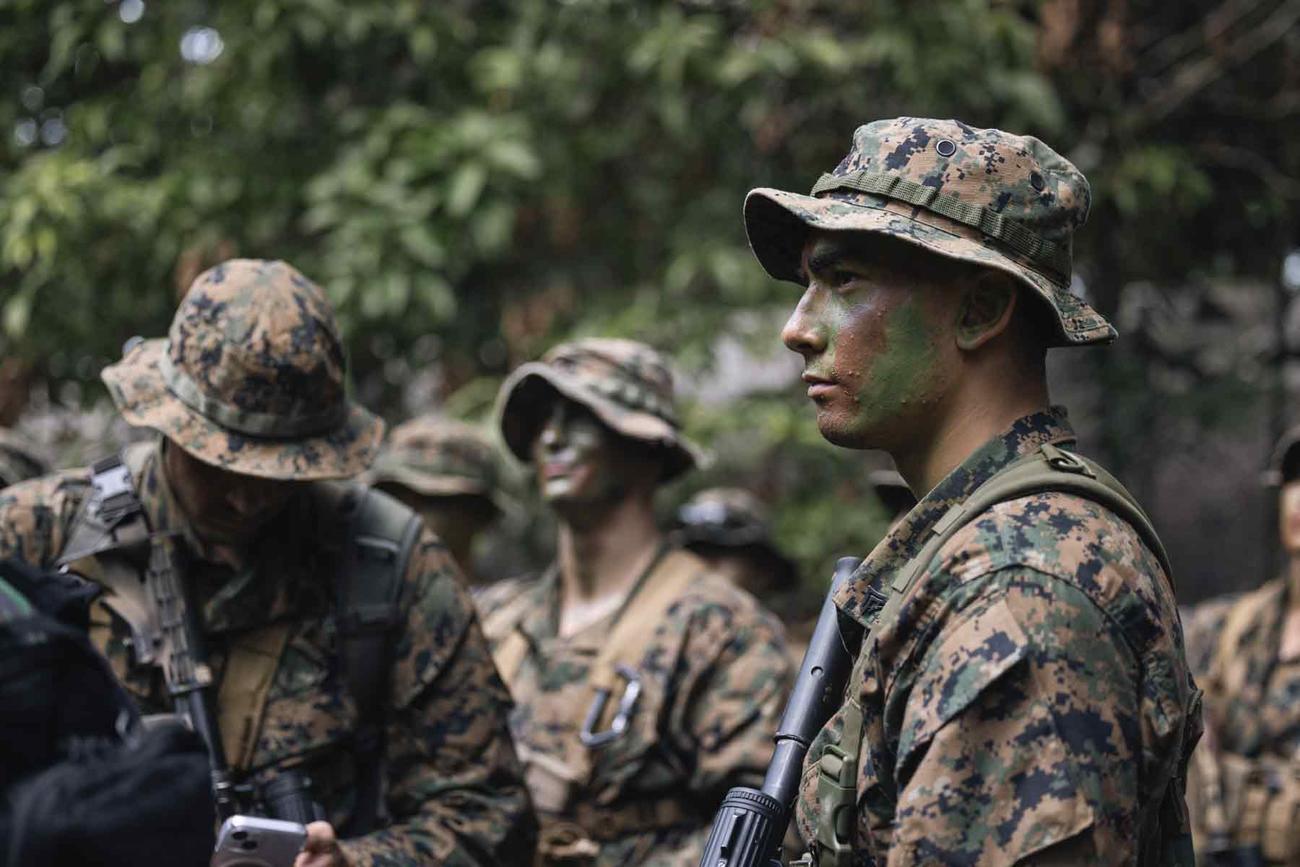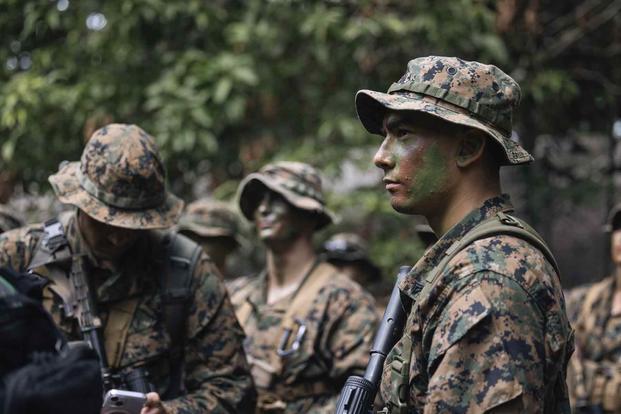

Marines and sailors arrived in the Philippines as part of a fairly new, but annual rotation to Southeast Asia as the U.S. looks to reassure regional allies in the midst of ongoing tensions with China, the service announced in a press release on Wednesday.
Marine Rotational Force-Southeast Asia, or MRF-SEA, which historically has comprised roughly 200 personnel, will train alongside at least six U.S. allies in the region through March.
While this is the third rotation to the region for the force, the Marine Corps signaled that it has grown in scale in comparison to previous deployments, including six additional exercises and “security cooperation engagements” alongside countries such as the Philippines, Malaysia and Thailand.
Read Next: Troops at Colorado Space Force Base Will Have to Bring Their Own To-Go Boxes for Dining Hall
“It’s definitely gaining momentum,” a Marine leader who served as one of the initial planners of the MRF-SEA concept, and was granted anonymity to speak freely about the rotation, told Military.com on Thursday.
“The scale and scope of the exercises are deepening and broadening,” they said. “And that all reflects our growing relationship with our allies and partners.”
The rotation comes as much of the international focus is on the Middle East after Iran launched ballistic missile attacks into Israel amid a broader conflict spurred by Hamas’s Oct. 7 attack last year. But as the Marine Corps continues its path to reorganize, the Pacific has been a constant center for its operations — and MRF-SEA is one of its latest concepts to bolster that presence.
And tension in the Pacific continues to broil. USNI reported Wednesday that a Chinese carrier strike group was operating near the Philippines this week just as the Marine Corps announced the arrival of the MRF-SEA rotational force.
“The Marine Corps is committed to preserving the freedom of the region and its people,” Col. Stuart Glenn, the commanding officer of MRF-SEA, said in a release Wednesday. “We train together to strengthen our relationships and collective capabilities, and the intent of MRF-SEA is to cultivate and reinforce the common values and capabilities between our partners and to preserve a rules-based international order.”
Training includes ground and aircraft exercise, medical training, chemical and biological responses, logistics, small boat and amphibious operations as well as drone employment, the service said in its release.
U.S. units include personnel from the 1st Air Naval Gunfire Liaison Company, I Marine Expeditionary Force Information Group and the 1st Marine Division. Leaders from the 13th Marine Expeditionary Unit, which is based out of California, will serve as the command element throughout the rotation.
MRF-SEA was born from the blueprint of a similar rotation to Australia, which started in 2012 amid a broader “pivot to the Pacific.” That rotation is called Marine Rotational Force-Darwin and has occurred annually for over a decade with a larger force of thousands of service members compared to MRF-SEA.
Efforts for the MRF-SEA concept began in 2021, the Marine leader told Military.com, adding that the service saw a growing need to invest in parts of the region where it had been previously “underinvested in [its] posture and where we know there’s going to be an important relationship growing in the future.”
“Let’s start that investment now,” the Marine said of the planning process that began years ago. “Let’s start small and smart. Let’s be deliberate about it.”
MRF-SEA kicked off its inaugural deployment last year. Military.com previously reported on other units’ exercises in the Philippines, a country that has both been harassed by Chinese military forces and increased its partnership with the U.S. in recent years.
Related: How Marines Took an Airfield in the Philippines in a Show Against China
